Birmingham's locked up and abandoned Jewish cemetery
- Published

Birmingham's Hidden Spaces went inside Betholom Row cemetery before it was sealed off
A Jewish cemetery lies abandoned and overgrown in a city centre where it goes unnoticed, hidden between three lanes of traffic, a canal and railway line. Those who know it is there cannot get in as high fences have been put up and the gateway welded shut.
How did this once peaceful and sacred resting place come to be locked and unloved inside Birmingham?
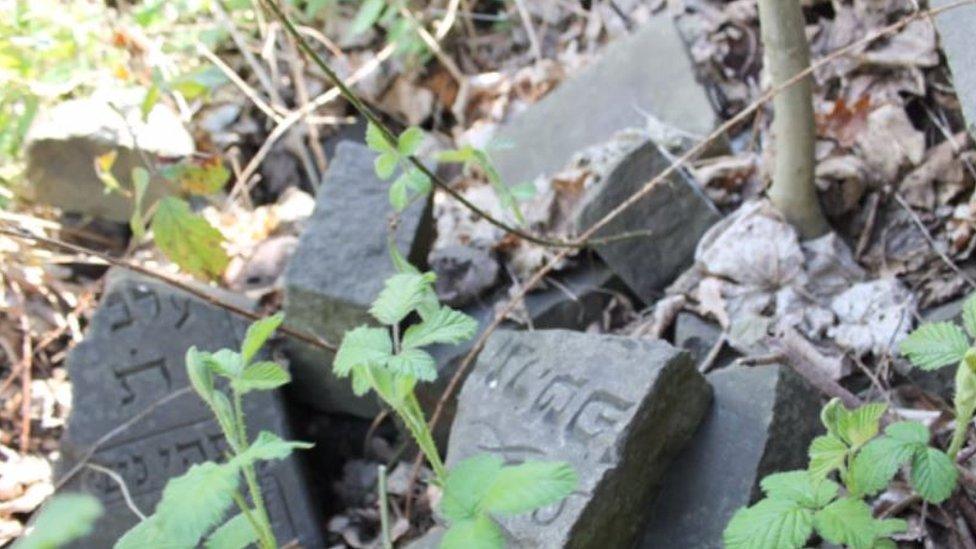
Gravestones lie broken as undergrowth creeps around them
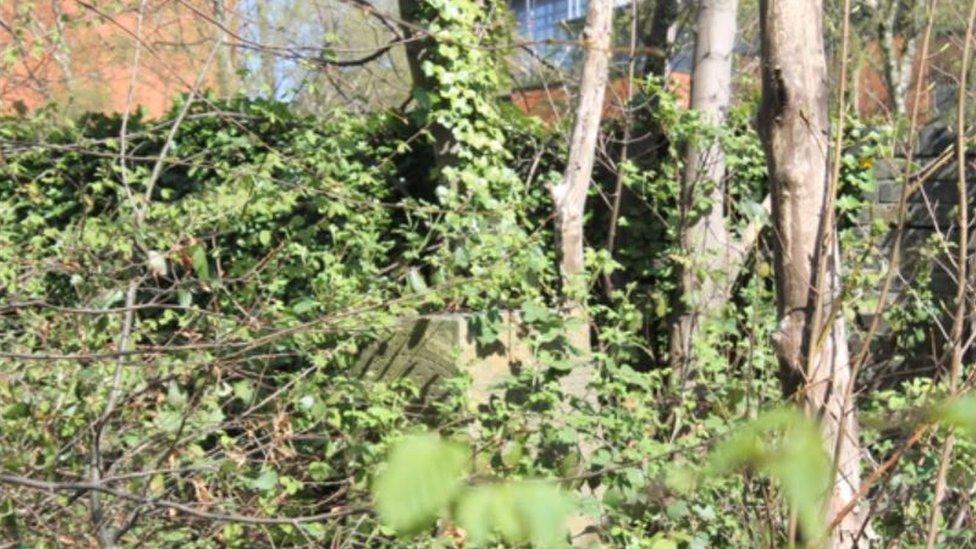
These pictures taken before the cemetery was sealed off show memorials almost completely obscured by leaves
Sue Heath discovered the cemetery while working at Selly Oak Trust School in 1994.
When her pupils told her they had found an abandoned graveyard she did not believe them.
"They said Miss, Miss you've got to come and see. So off we went," she said.
"I remember seeing gravestones dated between 1759 and 1762. I have always wondered what it was and why it was abandoned."
Mrs Heath used Your Questions to ask us to investigate.
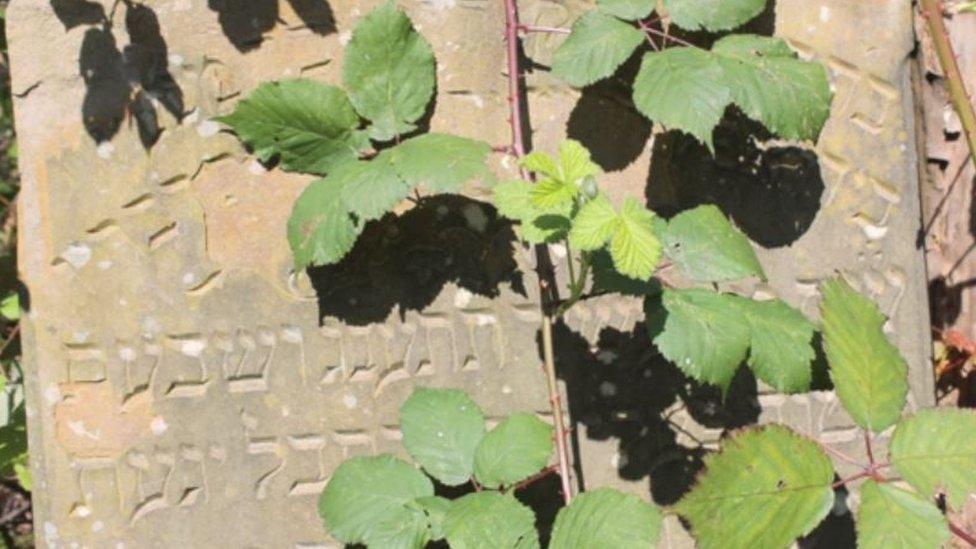
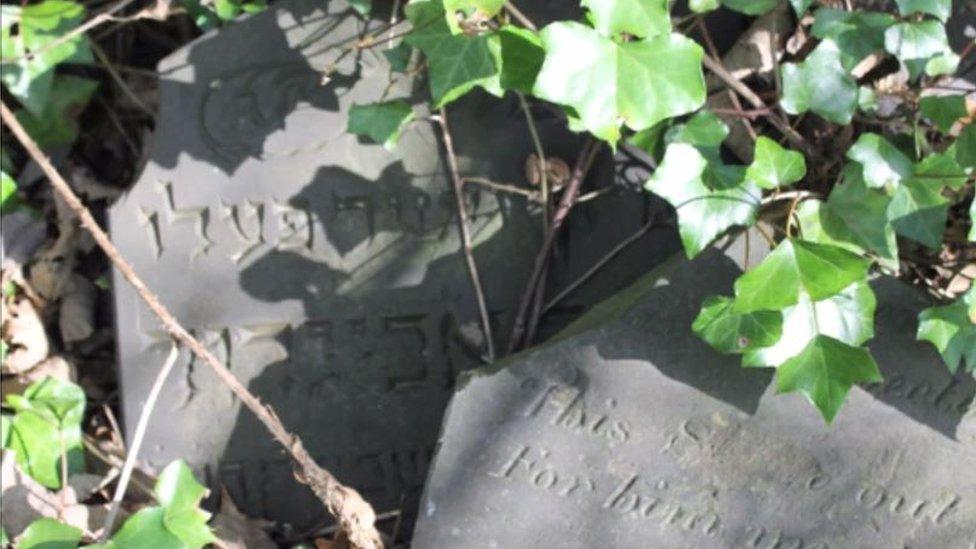
Some graves were moved to Witton cemetery but others remain forgotten
We met Keith Rowe from the Birmingham Hebrew Congregation, external at the red gate on the other side of the Islington Row Middleway opposite Five Ways railway station.
He told us the story of the congregation's sacred resting place, Betholom Row, destroyed by city development.
"The cemetery was originally much bigger than it is now," he said looking over the gate at the dense green foliage which completely covers toppled and broken gravestones.
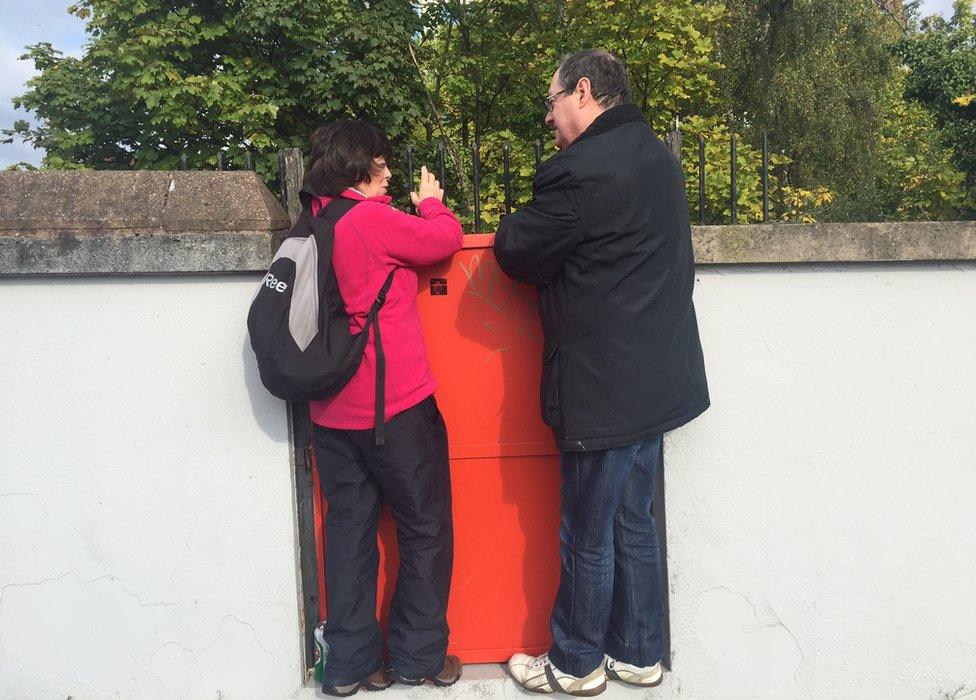
The gate to Betholom Row cemetery has been welded shut
"It dates back to the 1700s and predates the Singers Hill synagogue which was built in 1856.
"The previous building used by the congregation was just a few yards away from here. It's now a Masonic temple. So this was the Jewish cemetery for the area."

Birmingham Hebrew Congregation's Singers Hill synagogue is now in Blucher Street but they worshipped at a building yards away from the cemetery until 1856
In 1879 the government granted Midland Railway permission to extend the Birmingham West Suburban Railway (BWSR), external into Birmingham New Street which opened in 1885.
"They wanted to cut a railway line right through," said Mr Rowe. "To do that they had to get an act of parliament to allow a compulsory purchase of the land.
"There were lots of deceased in there who really shouldn't have been moved but because it was an act of parliament the Jewish community could not object."
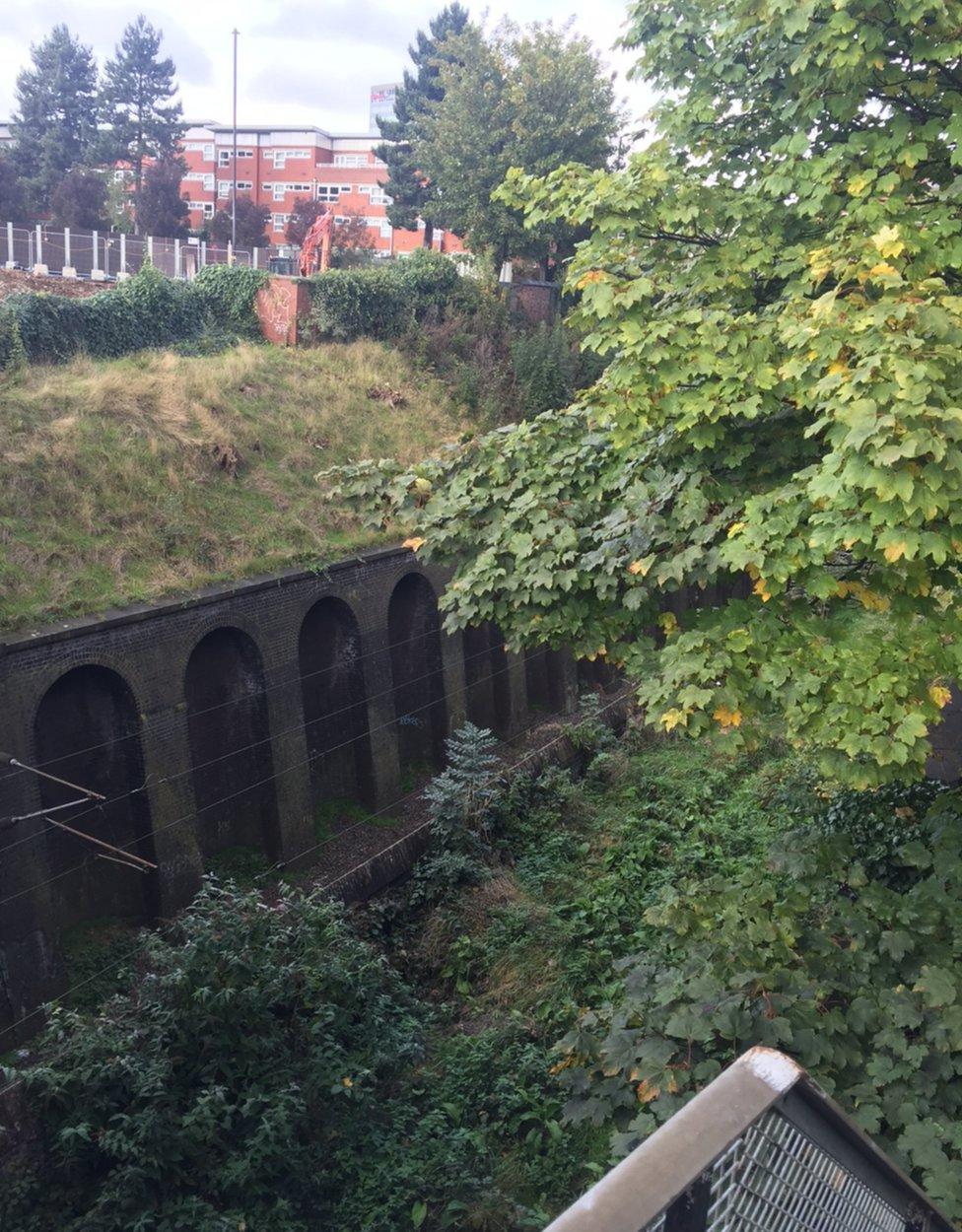
Graves were moved for the Birmingham West Suburban Railway to be built
He said the bodies and gravestones from the area affected by the railway line were moved to Witton Cemetery.
"We don't think they took the bodies from the other half," he said.
"They couldn't identify all the graves because some of the stones had fallen over and others the names wore off over time.
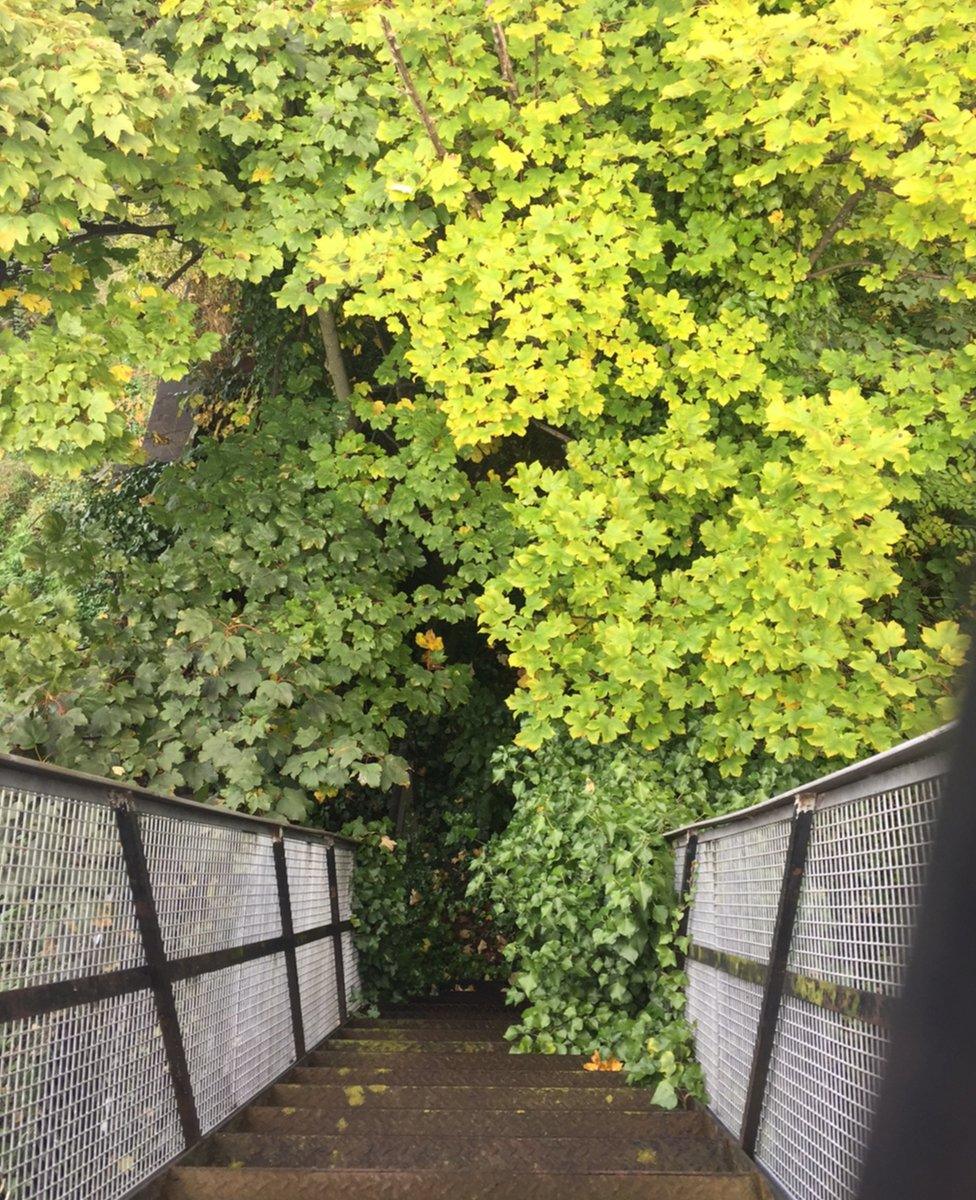
The view of the cemetery from the gate as it is today
"So they put them all to the side and closed it all off. You couldn't get to it unless you knew it was there."
About two years ago, before fences went up, Birmingham's Hidden Spaces, external published pictures from inside the cemetery.
"It started being used for drugs and alcohol which isn't respectful so they've sealed up the door and very few people have been there since," said Mr Rowe.
Network Rail said it had secured the area to prevent access to the railway line.

Sue Heath got in touch through Your Questions and Keith Rowe told her the story of the cemetery
Mrs Heath said: "It's really sad that it's overgrown and it's been desecrated.
"But my own beliefs are this is just the resting place for the bodies and the soul is somewhere else."
Mr Rowe said: "That's the Jewish belief too. The area has gone back to nature and we are doing the right thing by leaving them in peace.
"Or as much peace as you can have in the centre of Birmingham."

The cemetery is hidden behind the red gate on the other side of the Islington Row Middleway opposite Five Ways railway station